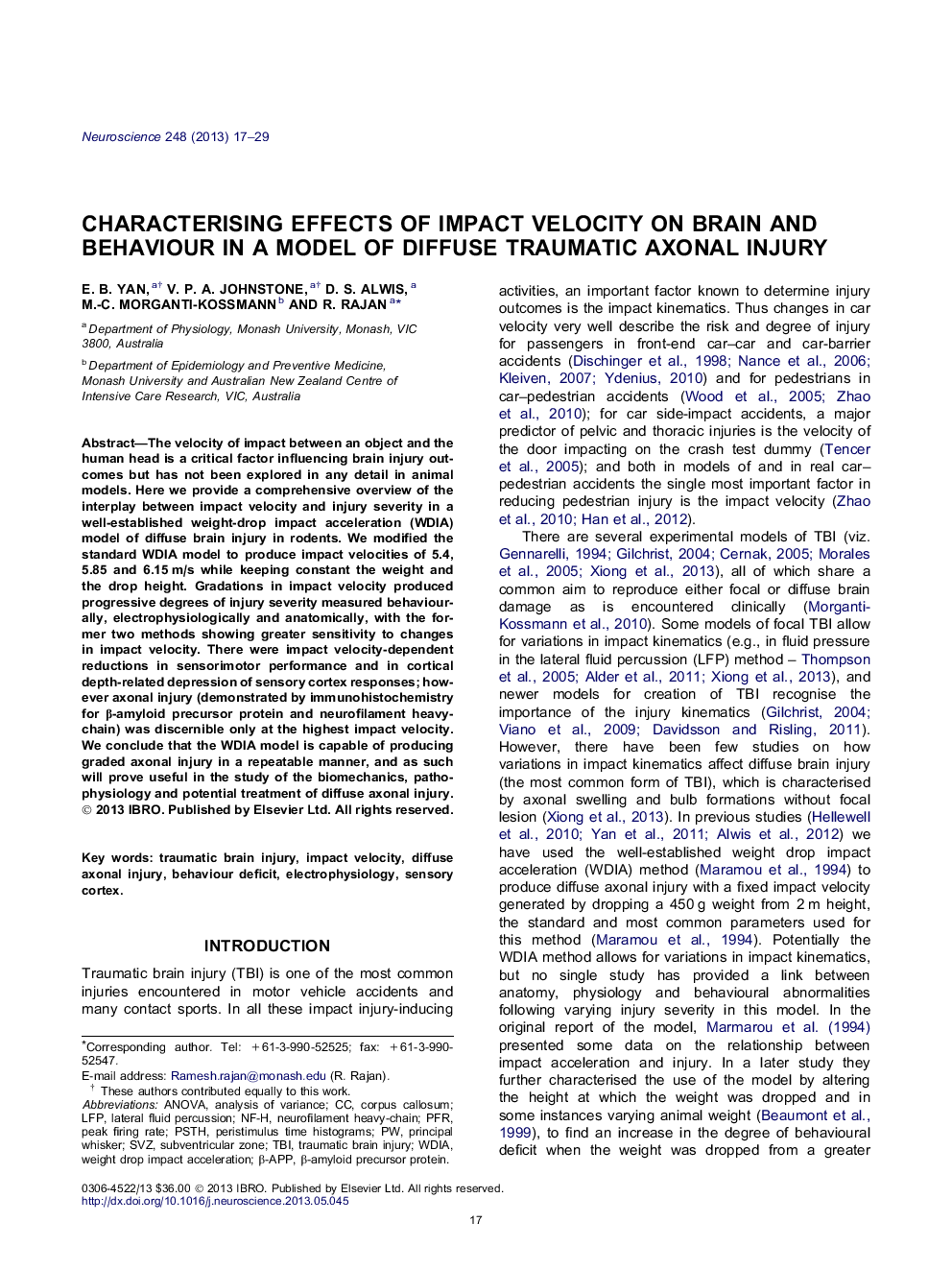| Article ID | Journal | Published Year | Pages | File Type |
|---|---|---|---|---|
| 6274717 | Neuroscience | 2013 | 13 Pages |
Abstract
The velocity of impact between an object and the human head is a critical factor influencing brain injury outcomes but has not been explored in any detail in animal models. Here we provide a comprehensive overview of the interplay between impact velocity and injury severity in a well-established weight-drop impact acceleration (WDIA) model of diffuse brain injury in rodents. We modified the standard WDIA model to produce impact velocities of 5.4, 5.85 and 6.15 m/s while keeping constant the weight and the drop height. Gradations in impact velocity produced progressive degrees of injury severity measured behaviourally, electrophysiologically and anatomically, with the former two methods showing greater sensitivity to changes in impact velocity. There were impact velocity-dependent reductions in sensorimotor performance and in cortical depth-related depression of sensory cortex responses; however axonal injury (demonstrated by immunohistochemistry for β-amyloid precursor protein and neurofilament heavy-chain) was discernible only at the highest impact velocity. We conclude that the WDIA model is capable of producing graded axonal injury in a repeatable manner, and as such will prove useful in the study of the biomechanics, pathophysiology and potential treatment of diffuse axonal injury.
Keywords
Related Topics
Life Sciences
Neuroscience
Neuroscience (General)
Authors
E.B. Yan, V.P.A. Johnstone, D.S. Alwis, M.-C. Morganti-Kossmann, R. Rajan,
